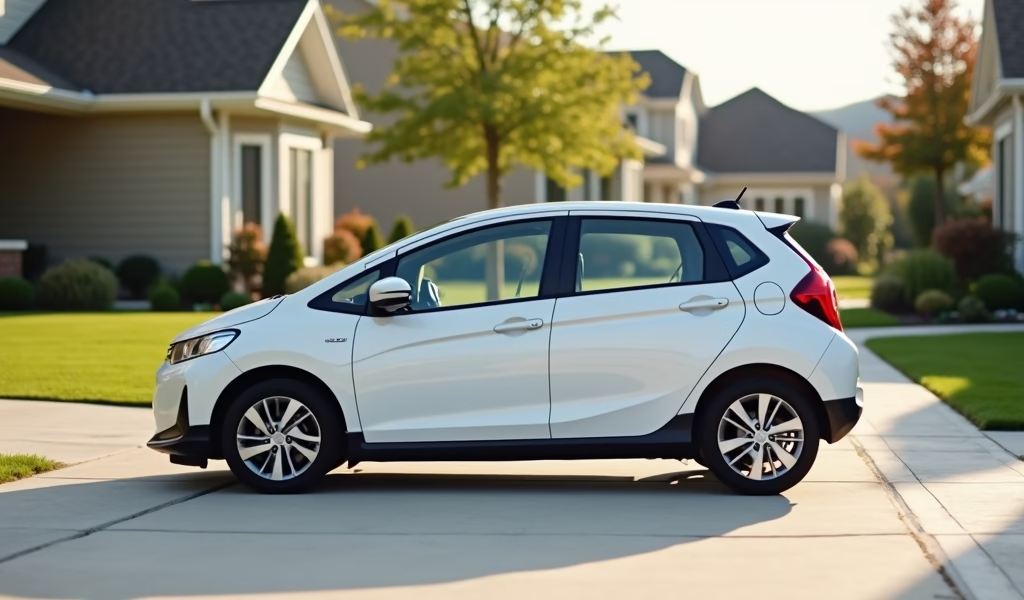Overview
This guide helps new drivers navigate auto insurance by explaining key factors affecting rates, coverage types, top insurance providers, and strategies to lower premiums through discounts and smart choices. It emphasizes the importance of comparison shopping, avoiding minimum coverage limits, and maintaining safe driving habits to secure adequate protection without overspending.
Table of Contents
- Understanding Auto Insurance for New Drivers
- Factors Affecting Insurance Rates for New Drivers
- Types of Auto Insurance Coverage for New Drivers
- Top Insurance Companies for New Drivers
- Discounts and Savings Opportunities
- Strategies to Lower Your Insurance Premium
- Comparing Insurance Quotes Effectively
- Common Mistakes New Drivers Make with Insurance
- Conclusion
- Frequently Asked Questions
Understanding Auto Insurance for New Drivers
Finding the best auto insurance for new drivers can feel like trying to decode a foreign language while blindfolded. Trust me, I get it. After spending years helping folks navigate the complex world of auto insurance, I’ve seen the confusion on the faces of new drivers when they’re hit with terms like “premium,” “deductible,” and “liability coverage.”
New drivers—whether they’re teenagers getting their first license or adults who’ve just started driving—face unique challenges in the insurance market. Insurance companies consider new drivers higher risk because they lack the experience and driving history that helps companies assess how likely they are to file claims. This often translates to higher premiums, which is why finding the right insurance for new drivers requires some extra homework.
But don’t worry—getting proper coverage doesn’t have to break the bank. With the right knowledge and approach, you can find insurance that protects you adequately while still being affordable. In this guide, we’ll walk through everything you need to know about securing the best auto insurance as a new driver.
Factors Affecting Insurance Rates for New Drivers
Before we dive into specific recommendations, it’s important to understand what influences your insurance costs. Insurance isn’t a one-size-fits-all product; rates are calculated based on various factors that help companies predict how likely you are to file a claim.
Age plays a massive role in insurance pricing. Teenage drivers typically face the highest premiums because statistics show they’re more likely to be involved in accidents. A study from the Insurance Institute for Highway Safety found that the fatal crash rate per mile driven for 16-19 year-olds is nearly three times the rate for drivers 20 and over.
Your driving record, even if it’s brief, matters tremendously. Any tickets or accidents can dramatically increase your rates. Even if you’ve only been driving for a few months, keeping a clean record from day one is crucial.
The type of vehicle you drive significantly impacts your premium. Sports cars and luxury vehicles cost more to insure than family sedans. Insurance companies look at factors like the car’s safety rating, repair costs, and theft rates when determining rates.
Your location affects your rates too. Urban areas typically have higher insurance costs than rural areas due to increased traffic density and higher rates of accidents and theft. Even your ZIP code within a city can make a difference.
Credit scores might seem unrelated to driving, but many insurance companies use them as a factor in determining rates. Studies have shown correlations between credit scores and claim frequencies, so maintaining good credit can help lower your insurance costs.

Types of Auto Insurance Coverage for New Drivers
Navigating the different types of auto insurance for new drivers can feel overwhelming, but understanding your options is essential for making an informed decision. Let’s break down the main coverage types:
Liability insurance is the foundation of any auto policy and is required in most states. It covers damages to other people and their property when you’re at fault in an accident. Think of it as your financial shield against lawsuits from other drivers. For new drivers, I typically recommend higher liability limits than the state minimum—you’d be surprised how quickly medical bills and property damage can exceed basic coverage.
Collision coverage pays for damage to your vehicle after an accident, regardless of who’s at fault. This is particularly valuable for new drivers who are more likely to have minor fender benders while developing their skills. If you’ve financed your vehicle, your lender will almost certainly require this coverage.
Comprehensive coverage handles non-collision incidents like theft, vandalism, fire, or damage from falling objects or natural disasters. It’s often bundled with collision coverage and is also typically required by lenders.
Uninsured/underinsured motorist coverage protects you if you’re hit by a driver who either has no insurance or insufficient coverage to pay for your damages. This coverage is surprisingly important—according to the Insurance Research Council, about one in eight drivers on the road is uninsured.
Personal Injury Protection (PIP) or Medical Payments coverage helps with medical expenses for you and your passengers after an accident, regardless of fault. Some states require PIP as part of their “no-fault” insurance laws.
Top Insurance Companies for New Drivers
After years of helping new drivers find coverage, I’ve seen certain companies consistently offer better value and service for those just starting out. Here are some top contenders to consider:
State Farm stands out for their programs specifically designed for young drivers. Their Steer Clear program offers both insurance discounts and educational resources for drivers under 25. They also have strong local agent support, which can be valuable for new drivers with questions.
Progressive offers competitive rates for new drivers and their Snapshot program can help safe drivers earn discounts based on their actual driving behavior rather than just demographic information. Their Name Your Price tool also helps new drivers find coverage that fits their budget.
GEICO often provides some of the most affordable rates for new drivers, especially college students. They offer discounts for good students, completing defensive driving courses, and being accident-free. Their user-friendly app makes policy management straightforward for tech-savvy new drivers.
Allstate’s Drivewise program rewards safe driving habits, which can help new drivers build good habits while earning discounts. They also offer a “Smart Student Discount” and their “Milewise” pay-per-mile option can be economical for new drivers who don’t drive frequently.
USAA provides excellent coverage and competitive rates for military members and their families. If you qualify, they consistently rank highest in customer satisfaction according to J.D. Power studies.
Liberty Mutual offers a RightTrack program that can lead to discounts based on safe driving habits, and they have specific discounts for recent graduates and students away at school without a car.
Discounts and Savings Opportunities
One of the best ways new drivers can make insurance more affordable is by taking advantage of the various discounts insurance companies offer. Here’s a rundown of the most valuable discount opportunities you should ask about:
Good Student Discounts reward academic achievement, typically offering 10-15% off for maintaining a B average or better. This discount acknowledges the correlation between responsible academic behavior and responsible driving.
Defensive Driving Courses not only build better driving skills but can also earn you a discount on your premium. Many insurance companies offer 5-10% off for completing an approved course. As a new driver, the skills you’ll gain are just as valuable as the discount.
Student Away discounts apply if you’re a student who goes to school more than 100 miles from home without your car. You can maintain coverage while receiving a significant discount during the school year.
Multi-policy discounts can save you 10-25% when you bundle auto insurance with other policies like renter’s or homeowner’s insurance. Even new drivers can take advantage of these if they’re purchasing multiple types of insurance.
Telematics programs use devices or smartphone apps to monitor your driving habits. As a new driver who practices safe driving, these usage-based insurance options can lead to substantial discounts—sometimes up to 30% for the safest drivers.
Pay-in-full discounts are available when you pay your entire premium upfront rather than in monthly installments. This can save you 5-10% on your total premium cost.
Affiliation discounts may be available if you’re a member of certain organizations, alumni associations, or professional groups. Always ask about these as they’re often not automatically applied.

Strategies to Lower Your Insurance Premium
Beyond discounts, there are strategic decisions you can make to reduce your insurance costs as a new driver. Here are some proven approaches I’ve seen work for my clients:
Choose your vehicle wisely. The car you drive significantly impacts your insurance rates. Opt for vehicles with high safety ratings, low theft rates, and reasonable repair costs. Avoid sports cars, luxury vehicles, and models with high theft rates as these will substantially increase your premium.
Consider a higher deductible if you can afford it. Increasing your deductible from $500 to $1,000 could lower your premium by 10-20%. Just make sure you have enough savings to cover the deductible if you need to file a claim.
Maintain continuous coverage without lapses. Even a short gap in coverage can result in higher rates when you purchase insurance again. If you’re temporarily without a car, consider a non-owner policy to maintain continuous coverage.
Improve your credit score if possible. In most states, insurance companies use credit information to determine rates. Paying bills on time and reducing debt can help improve your score and lower your insurance costs over time.
Take advantage of low-mileage discounts if you don’t drive much. Some companies offer discounts or have special programs for drivers who put fewer than 7,500-10,000 miles on their car annually.
Consider usage-based insurance programs that track your driving habits through a mobile app or device installed in your car. Safe driving habits like gentle braking, moderate acceleration, and driving during safer hours can earn you significant discounts.
Get added to an experienced driver’s policy if possible. New drivers often see lower rates when added to a parent’s or spouse’s existing policy rather than purchasing their own. This is especially true for teenage drivers who can benefit from being on a family policy.
Comparing Insurance Quotes Effectively
Shopping around is perhaps the single most effective way to find the best car insurance for new drivers. But there’s a right way to compare quotes to ensure you’re making a fair comparison:
Request quotes with identical coverage levels from each company. This means using the same liability limits, deductibles, and optional coverages for each quote. It’s the only way to accurately compare prices across different insurers.
Don’t focus solely on the premium. Consider the company’s financial stability, customer service reputation, and claims satisfaction ratings. A slightly higher premium might be worth it for superior service when you need to file a claim.
Use online comparison tools but also speak with agents. While online tools provide quick estimates, speaking with an agent allows you to ask questions and potentially uncover additional discounts or coverage options that might benefit you specifically as a new driver.
Check for hidden fees or surcharges that might not be immediately obvious in the quote. Some companies charge extra for monthly payments or have higher fees for policy changes.
Consider how the company handles claims. Look up reviews and ask friends or family about their experiences. A company that makes the claims process smooth and fair is invaluable, especially for new drivers navigating their first accident.
Re-shop your insurance annually, especially during your first few years of driving. As you gain experience and maintain a clean record, your risk profile improves, potentially qualifying you for better rates with different insurers.
Common Mistakes New Drivers Make with Insurance
After years in the industry, I’ve noticed some common pitfalls that new drivers frequently encounter. Avoiding these mistakes can save you money and headaches:
Choosing the minimum coverage requirements might seem budget-friendly, but it’s rarely adequate protection. State minimums are often surprisingly low and wouldn’t cover serious accidents. Consider purchasing higher liability limits to protect your assets and future earnings.
Not asking about all available discounts is a missed opportunity. Insurance companies won’t automatically apply every discount you qualify for—you need to ask specifically about each one.
Ignoring the importance of comparison shopping can cost you hundreds or even thousands of dollars annually. Rates vary dramatically between companies, especially for new drivers.
Failing to update your policy when circumstances change can lead to coverage gaps or missed saving opportunities. Life events like moving, getting married, improving your credit score, or even changing jobs can affect your eligibility for better rates or additional discounts.
Neglecting to read the policy details is surprisingly common. Many drivers don’t understand exactly what their insurance covers until they need to file a claim—when it’s too late. Take the time to understand your coverages, exclusions, and the claims process before you need it.
Staying loyal to one insurance company without periodically checking rates elsewhere often results in paying more than necessary. Insurance pricing is complex and dynamic—the company that offers the best rate when you first start driving may not be the most competitive option a year or two later.
Conclusion
Finding the best auto insurance for new drivers doesn’t have to be an overwhelming process. With the right approach and information, you can secure coverage that protects you adequately without unnecessarily straining your budget. Remember that as a new driver, your insurance needs and options will evolve as you gain experience behind the wheel.
Start by understanding the factors that affect your rates and the coverage types that provide appropriate protection for your situation. Research reputable companies that offer programs specifically designed for new drivers, and be diligent about exploring all possible discounts and savings opportunities.
Don’t be afraid to ask questions when shopping for quotes, and make sure you’re comparing equivalent coverage levels across different insurers. Avoid common mistakes like choosing minimum coverage limits or failing to update your policy as your circumstances change.
Most importantly, practice safe driving habits from the very beginning. Not only will this keep you and others safer on the road, but it’s also the most effective long-term strategy for keeping your insurance costs manageable. Each year of accident-free driving brings you closer to more affordable premiums.
The journey to becoming an experienced driver takes time, but your understanding of auto insurance doesn’t have to lag behind. With the knowledge from this guide, you’re well-equipped to make informed decisions about your coverage, starting with your very first policy.
Frequently Asked Questions
How much does insurance typically cost for a new driver?
New drivers typically pay between $1,500 and $3,000 annually for full coverage insurance. Exact costs vary based on age, location, vehicle type, and the chosen insurance company.
Can new drivers get discounts on auto insurance?
Yes, new drivers can qualify for several discounts including good student discounts, defensive driving course completion, and telematics programs. Most insurers also offer multi-policy discounts when bundling with other insurance products.
Is it better for a teenage driver to get their own policy or join their parents’ policy?
It’s almost always more cost-effective for teenage drivers to join their parents’ policy. Adding a teen to a family policy typically increases the premium by 50-100%, while a separate policy for a teen might cost 2-3 times more.
How long are drivers considered “new” by insurance companies?
Insurance companies typically consider drivers “new” for the first 3-5 years of licensed driving. Rates generally begin to decrease significantly after 3 years of clean driving history.
Will taking a defensive driving course lower my insurance as a new driver?
Yes, completing an approved defensive driving course can reduce your premium by 5-15% with most insurance companies. These courses not only save you money but also provide valuable skills for new drivers.

